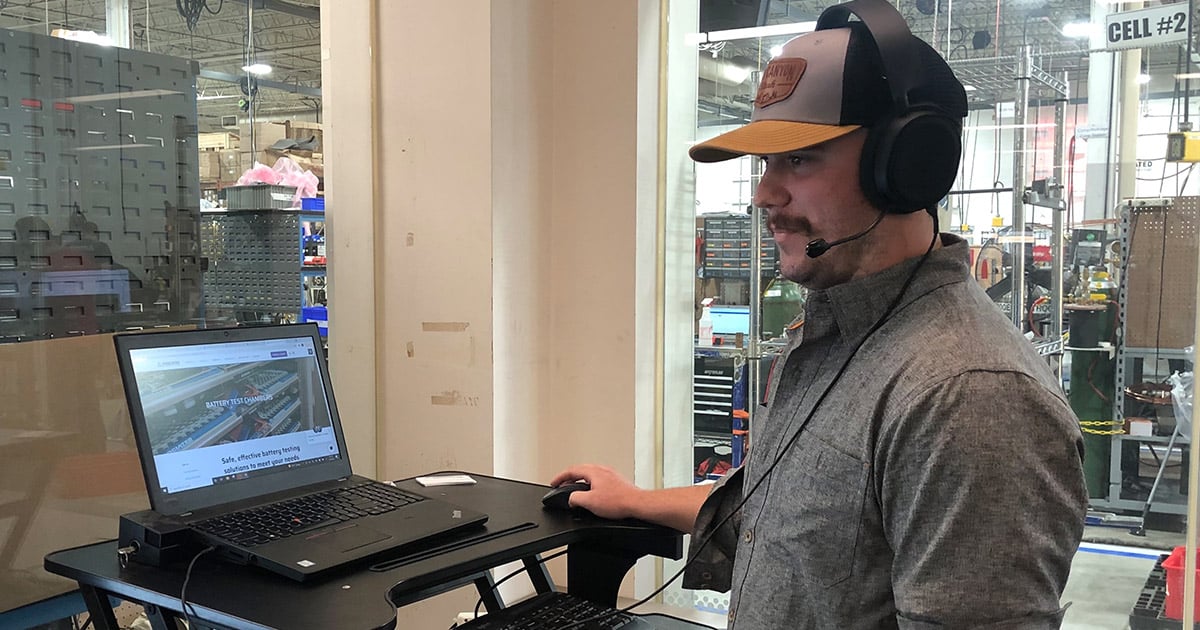AES Test Chambers: Before, During, and After Your Purchase

Since our founding, we have been driven by the vision and success of our customers. Associated Environmental Systems (AES) works alongside industries to guarantee they receive optimized environmental test chamber solutions, from EV manufacturers to aerospace companies to pharmaceutical organizations and more. Customers can expect superior service beyond a chamber purchase, ensuring chambers run for 10 years or more.
Have you considered AES’ test chamber prices and test chambers for sale? If you want to learn more about AES’s test chamber buying process, you’ve come to the right place. We have answers to your questions. Learn more about our process—start to finish—and how our sales team will help guide you to your ideal chamber.
Choosing the Right Environmental Test Chamber
Each customer’s needs are unique. To get to know your challenges and find a solution, our sales team will ask specific questions tailored to find out more information about your application and narrow down possible types of test chambers that will accommodate your testing.
- Does your sample give off a live load (heat) while testing? If so, can you quantify the live load in kW?
- Does your testing require rise/ramp times? If so, can you quantify the rate in C/min?
- What is your desired temperature range? Do you require humidity?
- What is the maximum weight to be tested inside the chamber?
- Are you trying to reach a certain standard? Which one?
- What size chamber do you envision?
When it comes to chamber size and design, AES takes a lean manufacturing approach.
Although it may be different from what you initially envisioned, our team at AES will help you identify the proper chamber size. Depending on your needs, it may be a larger chamber, or we suggest multiple chambers to accommodate smaller batches. Ultimately, AES believes in providing customers with the best possible option. We want to ensure you have a solid return on investment for all your chamber needs. From standard to custom builds, we’ll make sure the chambers fit within your lab space and meet current requirements and ongoing changes.
Testing Chamber Building And Installation
The initial build phase of each project is collaborative and meticulous. We provide each customer with complete clarity into the project status and timeline. To do so, AES team members meet weekly with the production and manufacturing teams and update customers accordingly. We are proactive in delivering news regarding the latest strategies and challenges.
Once the build phase is complete, customers eagerly await delivery and installation. Most of AES’s standard chambers are considered plug-and-play–meaning you have already provided the building requirements before the chambers’ arrival. Be sure to clear your lab space and check to make sure you have access to power, water, compressed air, and an ethernet cable (for the controller) in place near where the chamber resides. These requirements are chamber-dependent. For instance, not all chambers require a water source, compressed air, or LN2 or CO2. After inspecting the chamber to ensure there’s no apparent damage from shipping, you can connect the chamber to power, read through your manual, and get up and running. If you were to need help in the installation process, AES can set you up with an installation add-on, so a team member can help set up your chamber and run you through the operations of your chamber.
Testing Chamber Maintenance
At AES, we never stop investing in your chambers. Maintenance begins as soon as your chamber arrives. To help get you off to a strong start, AES offers one-year parts and 90-day labor warranties. We also offer customers the opportunity to invest in an Advanced Service Advantage Plan (A.S.A.P.) to expedite service and stay ahead of issues.
Some quick tips for practicing preventative maintenance on your own include:
- Run your chambers from time to time between use
- Regular cleanings
- Inspect the electrical, humidity, refrigeration, and circulation systems, looking for small issues that need attention
- Check the exterior, workspace, and floor panels for punctures, tears, and dents
- Check the degradation of all gaskets: door(s), window(s), port(s), wiring, and plug(s)
We recommend calibrating your chambers once every six months to a year to ensure accuracy. Should anything arise that needs to be examined by an expert, reach out to AES. Our service teams are stationed around the country, and our support staff are ready to field your requests.
Let’s Get Started
How can we help? AES is here to provide high-quality service for all your environmental chamber needs. AES has solutions for every requirement, from stability chambers to temperature and humidity chambers to battery chambers. We encourage you to contact one of our sales engineers and call us at 1-978-456-5279.
We look forward to hearing your next big idea.



